|
There cannot be many artists who have swallowed their
own works by mistake. Then again, there cannot be many artists who can
cheerfully put a six-figure price on something the size of the full stop
at the end of this sentence."Take a look at this. It will blow you
away," says Willard Wigan.
|
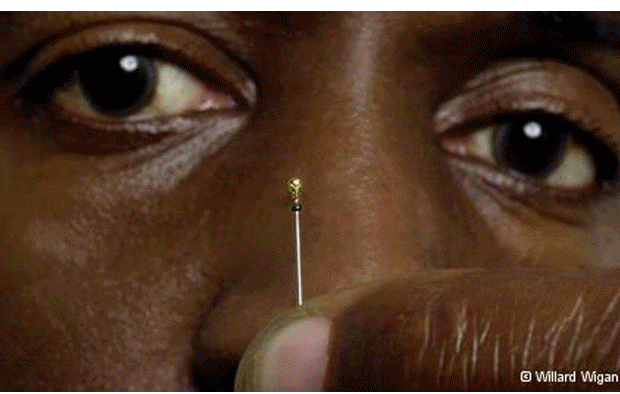 |
You have to look very closely to see that what British artist Willard
Wigan is holding in his hands is not just a regular needle. It is art,
or to be more precise, micro art. The pinhead is actually a tiny FIFA
world cup. It’s not visible to the naked eye; Wigan’s figurines come
alive under a microscope. No wonder, the sculptures are only about 0.005
millimeters (0.0002 inches) large - or small.
|
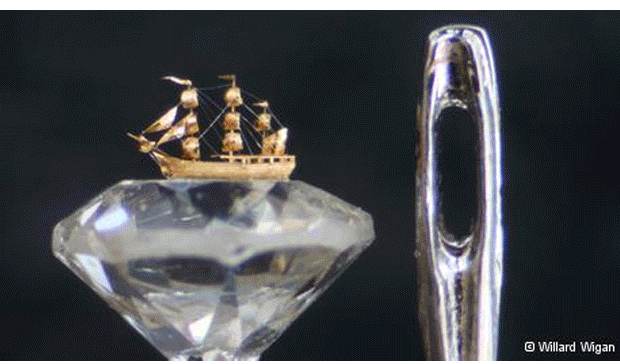 |
|
A direct comparison shows how tiny
Wigan’s miniatures really are. The golden galleon would easily fit
through the eye of a needle. Wigan currently presents the top 20 of his
art pieces at the Museum for Art and Industry (MKG) in Hamburg -
obviously under a microscope. Compared to other works of art, Wigan’s
pieces have a clear advantage: they conveniently fit into one’s pocket.
|
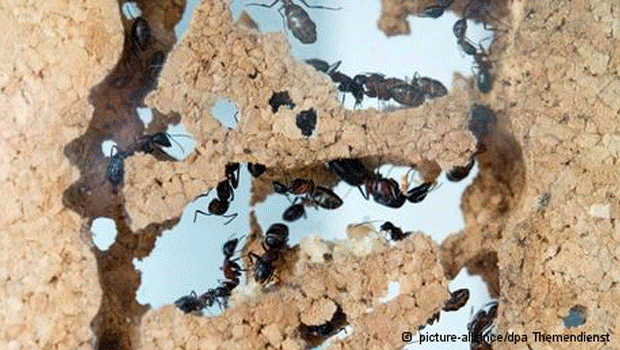 |
|
What sparked Wigan’s fascination for tiny
things? Ants. In school Wigan, who was born in 1957, suffered from an
inherent learning disability, which caused his fellow classmates to make
fun of him and bully him. So Wigan created his own world in miniature
form, building tiny, fully furnished houses for his ants.
|
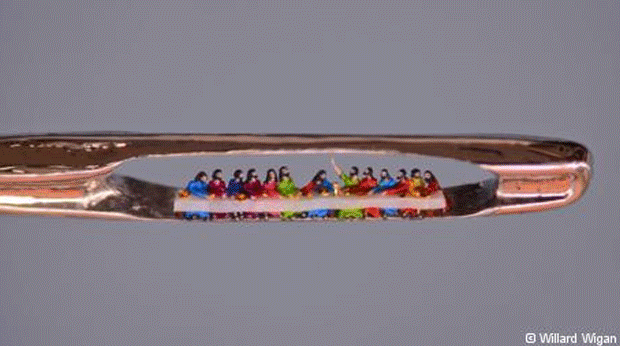 |
According to the artist, this led to an "obsession." His sculptures had
to become smaller and smaller, such as this copy of Leonardo da Vinci’s
Last Supper. One Bible verse especially challenged Wigan: "It is easier
for a camel to pass through the eye of a needle, than for a rich man to
enter the Kingdom of God." With his art he wants to prove that small
things can be mighty as well.
|
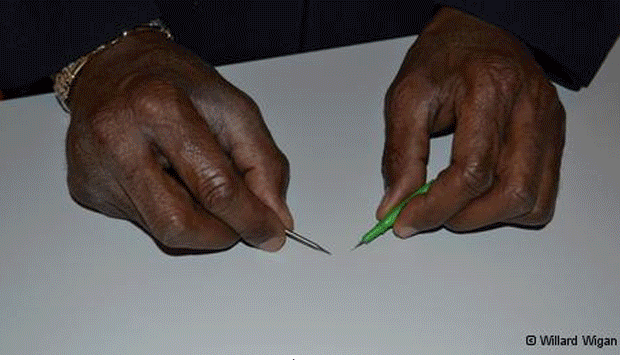 |
Wigan makes the tools for his micro sculptures himself: needles made of
tiny ruby and diamond splinters. He uses them to carve, cut and shape
the miniature works under the microscope. Wigan says he doesn’t make any
compromises. He considers himself a sculptor rather than an artist, and
the public is only privvy to the perfect micro sculptures. The rest get
tossed.
|
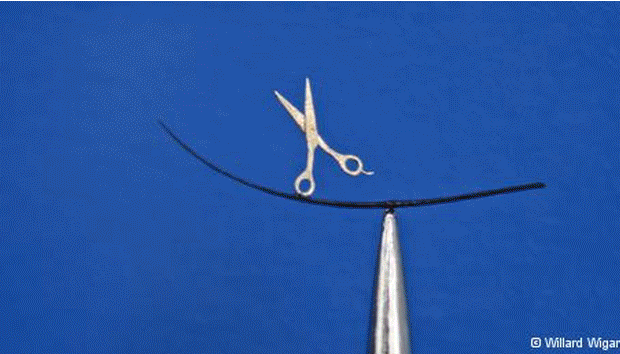 |
These tiny scissors balance on one of Wigan’s eyelashes - his most
important working device. Lashes serve him as a brush to paint the
figurines and buildings. Before, Wigan used to convert the hairs of
flies into brushes, but he found that human lashes work just as well.
Wigan’s sculptures are made of various materials like carpet fiber,
gold, Kevlar and plastic.
|
 |
Wigan’s body is an important tool for his work. He uses his body to
create art, such as this "Yellow Submarine" piece based on the famous
movie and album by the Beatles. Wigan thus keeps in shape and can
transfer himself into some sort of meditative mood, he says. Working on
one sculpture can take up to two months, and an 18-hour work day is not
uncommon.
|
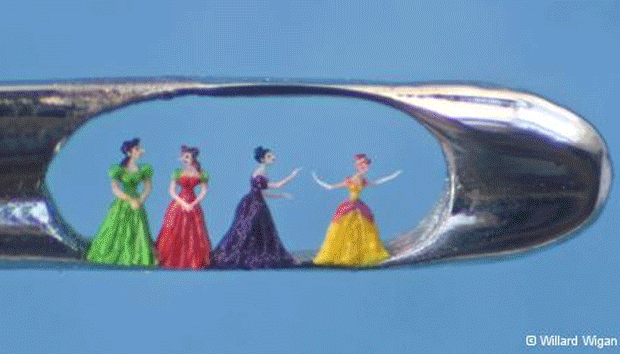 |
Wigan’s tiny sculptures have garnered prizes. For more than 10 years,
the sculptor has managed to live off his "tiny art." His story sounds a
little like Cinderella’s fairy tale, which is depicted in the picture
above. Formerly an alleged underachiever, Wigan has made it as an
acknowledged artist. You can see more of his art at the Museum of Art
and Industry in Hamburg until March 16.
|